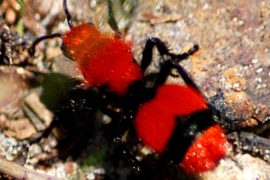Mosses are among the most popular aquatic plants in the aquarium. Their fascinating appearance, the many possible uses, and their ease of care make them so popular. Once you have chosen a few nice varieties, it is time to attach the moss. Which method is the best? We explain how it works and give you some useful tips.
Fastening moss – tying it up or sticking it down?
Which method is best for fixing moss in the aquarium naturally also depends on where the plant is to grow. Basically, the following methods are available for aquarium mosses:
- plant roots
- plant stones
- Green the back walls
- Use as ground cover
Glue the moss with underwater glue
This variant is particularly practical. Gel moss glue also sticks to damp objects. You get it in small tubes that are easy to handle. It is very versatile and when it comes to fixing moss in the aquarium, it is clearly the first choice. The moss is not damaged, can be applied precisely, and has a firm hold on any surface. Even demanding aquascaping projects can be realized precisely with moss glue.
Untie moss
A fishing line or another thin nylon line is suitable for tying up moss. Spread the moss on the desired item. The small moss branches should be in a maximum of two layers on top of each other on the surface. If the layer is too thick, the plants below will die. Now carefully wrap the string around, not too tight, not too loose. The fine branches must not be damaged, but the moss should be in contact with the object on which it is to grow. You can also sew the moss onto a filter or pond mat using an embroidery needle with individual coarse stitches.
String or twine are only suitable for tying up plants to a limited extent, as they expand over time and the moss loosens if it has not yet grown firmly. The advantage is that it is quickly at hand – a practical solution when things need to be done quickly.
Fix moss with a hair net
This method is particularly suitable for stones. Place the moss on top, pull the hairnet over it and pull tight. Trim if necessary and secure with nylon or a fishing line. Nets in dark colors are barely visible underwater. The plant grows out of it as a dense cushion, so that it is soon no longer visible.
Stuck moss in the aquarium
You can also carefully pinch the plants in the hardscape between rocks and roots. After a while, the mosses will grow there. At first glance, this method is very simple. However, the moss must have good contact with the surface in order for it to hold. If the branches are drifting in the current or if fish are tampering with them, it can take a long time. In addition, the parts that do not receive light will die. We, therefore, advise you to attach larger amounts of moss better with another method – so you have the most of the pretty plants.
Fix moss with a suction cup
Sometimes single, bare spots in aquaria are disturbing. A great trick is to fix smaller tufts of moss in the aquarium pane with suction cups. Use a star sucker for this, which you can get in aquaristics shops. Simply pull the moss through the ring and attach it to the aquarium pane. This method is particularly well suited to temporarily concealing a gap in the planting.
No matter which variant you choose: Start with a sufficient amount of moss – especially if you want to cover larger areas. Since mosses grow very slowly, it usually takes a long time for a nice cushion to form. Each branch doubles in size within three to four weeks. The difference in starting with a handful of moss instead of a small portion can be easy to calculate.
What is your method of fixing moss in the aquarium? We look forward to reports and comments!





